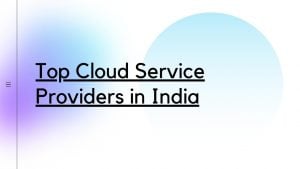Disaster Recovery Framework
Any organization’s IT strategy must include a disaster recovery structure. It offers a methodical way to reduce risks, guarantee business continuity, and bounce back from disastrous events.
An organization’s ability to respond and recover from disruptive situations depends on the establishment of a disaster recovery framework. By putting in place a strong disaster recovery structure, businesses can reduce downtime, safeguard important data, and quickly restart operations. Let’s examine the elements and importance of a disaster recovery framework to better comprehend why having one is essential for firms.
A disaster recovery framework is made up of a number of interconnected components that work together to help organizations handle disasters with ease. This framework’s main objective is to list the steps, techniques, and resources required for risk mitigation, incident response, and business operation restoration. Let’s examine the foundational components of a framework for catastrophe recovery.
Risk Assessment: A thorough risk analysis is the first step in a catastrophe recovery framework. Finding potential risks and weaknesses as well as their potential effects on crucial business processes is part of this.
Business Impact Analysis (BIA): A BIA aids in prioritizing corporate operations and resources according to their importance. For each business process, it aids in the determination of the recovery time objectives (RTOs) and recovery point objectives (RPOs), ensuring that the most crucial tasks are given priority during the recovery process.
Plan Development: A catastrophe recovery strategy is created based on risk assessment and business impact analysis. This plan lays out the steps, regulations, and materials needed to prepare for and recover from different sorts of disasters. It has a timeframe, roles and responsibilities, clear actions, and communication protocols for carrying out the recovery process.
Backup and Recovery: The significance of consistent data backups is emphasized by a disaster recovery strategy. This entails putting in place a reliable backup system to guarantee that crucial data is replicated and safely kept off-site. In the recovery phase, the framework should also specify the steps and resources needed to restore the backed-up data.
Infrastructure and Technology: The catastrophe recovery framework takes into account the infrastructural and technological needs. It takes into account factors like redundant systems, cloud-based solutions, and virtualization technologies that help speed up recovery times and reduce downtime.
Testing and Training: Validating the disaster recovery framework’s effectiveness requires regular testing and training. It entails running simulated recovery situations, finding any gaps, and adjusting the plan as necessary. Training programs make ensuring that employees are knowledgeable of their obligations and tasks in the event of a disaster, enabling a well-coordinated response.
Continuous Improvement: A disaster recovery framework is a continuous process, not a one-time project. It needs to have systems in place for ongoing review and improvement. The framework can be modified on a regular basis to address evolving business needs, new risks, and technological improvements.
Organizations can lessen the effects of disruptive disasters, secure crucial data, and guarantee business continuity by putting in place a strong disaster recovery structure. It offers a methodical approach to catastrophe response, data and system recovery, and prompt return to regular corporate operations.
SyncCore Cloud Disaster Recovery Framework
Assessing potential risks and vulnerabilities is crucial when putting in place a disaster recovery strategy. Disaster recovery is made possible by the scalable and safe cloud architecture offered by SyncCore Cloud. Organizations can reduce risks and safeguard their crucial data from threats by making use of the strong infrastructure provided by SyncCore Cloud.
Data backup and recovery are important components of a disaster recovery strategy. Offering dependable and safe cloud storage options, SyncCore Cloud enables businesses to safely store their vital data off-site. Organizations can rest easy knowing their data is secure thanks to SyncCore Cloud’s cutting-edge security safeguards, which include access controls and encryption.
The high availability and redundancy features of SyncCore Cloud are essential in a disaster. Data replication and failover capabilities are made possible by their geographically dispersed data centers, guaranteeing that businesses can quickly recover their data and systems. Organizations may reduce downtime and guarantee business continuity by including SyncCore Cloud in their disaster recovery framework.
Disaster recovery as a service (DRaaS), another service provided by SyncCore Cloud, streamlines the recovery procedure. Businesses may replicate their whole IT infrastructure, including servers, applications, and data, to the dependable cloud platform of SyncCore Cloud using DRaaS. In the event of a disaster, this enables quick recovery and seamless failover.
Validating a disaster recovery framework’s effectiveness requires frequent testing and training. Organizations have the freedom to run simulated recovery scenarios thanks to SyncCore Cloud, guaranteeing that the framework is reliable and in line with business needs. Additionally, SyncCore Cloud provides thorough training and assistance to make sure that businesses can use its services in the event of a crisis.
Organizations can increase their overall resilience and guarantee quicker recovery times by integrating SyncCore Cloud into their disaster recovery framework. With its DRaaS offering and secure and scalable architecture, SyncCore Cloud is a great option for businesses looking for a dependable cloud service provider to aid in their disaster recovery efforts.
In conclusion, when building a disaster recovery framework, partnering with a trusted cloud service provider like SyncCore Cloud is crucial. Their secure infrastructure, advanced features, and disaster recovery as a service offering can significantly enhance the framework’s effectiveness. By leveraging SyncCore Cloud’s services, organizations can ensure the continuity of operations, protect critical data, and recover quickly in the face of disruptive incidents.
Read More:
Disaster Recovery Checklist for IT Systems: Ensuring Business Resilience



